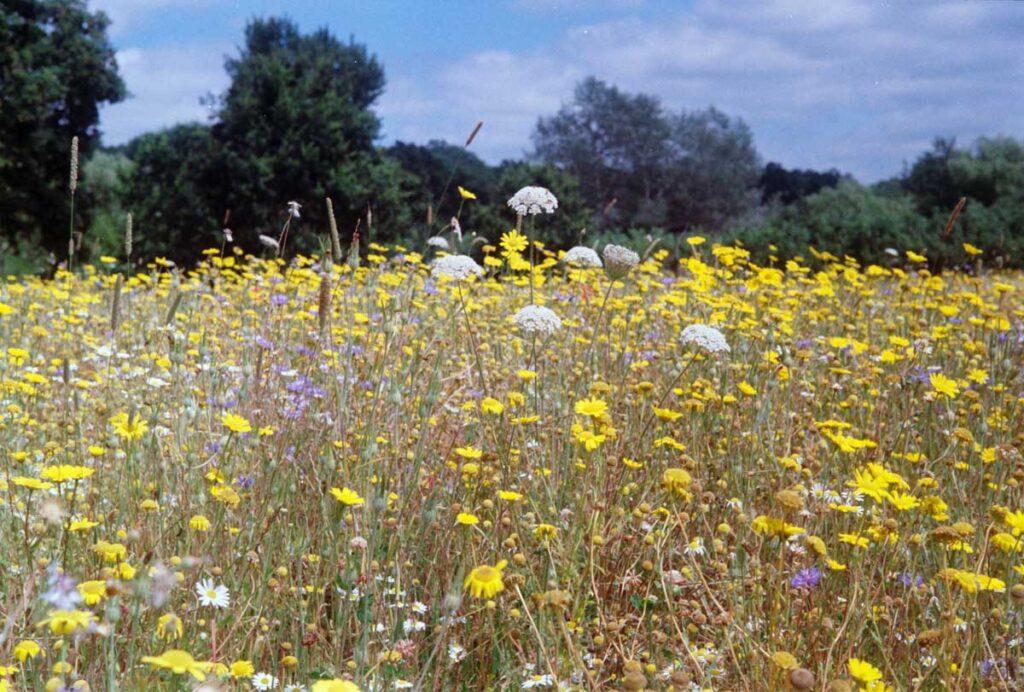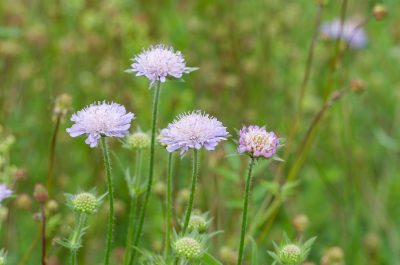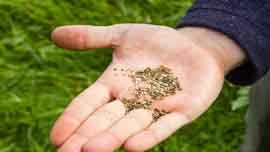Wildflower Seeds for Loam and Alluvial Soils: Locally Sourced Solutions for Lush, Flourishing Meadows
Transforming open spaces into colourful, thriving wildflower meadows starts with understanding the foundation: your soil. Loam and alluvial soils are among the most fertile and versatile types, and when paired with the right seed mixes—especially those that are locally sourced—the results can be breathtaking. At Wildahome, we specialize in wildflower seeds tailored to these rich soil types, offering sustainable, biodiverse beauty for gardens, farms, and rewilding projects.
Understanding Loam and Alluvial Soils
What Are Loam and Alluvial Soils?
Loam is a balanced mix of sand, silt, and clay, often considered the ideal soil type for plant growth. It holds moisture and nutrients well yet drains efficiently. Alluvial soil, on the other hand, forms from sediments deposited by rivers and streams. Found primarily on valleys and floodplains, it’s typically nutrient-rich and highly productive.
Characteristics That Make Loam Ideal for Plant Growth
Loam’s structure promotes aeration, root penetration, and water retention—all key factors for healthy plant development. It’s often slightly acidic to neutral, offering a pH sweet spot for most wildflowers. The presence of organic matter further enhances its fertility.
The Fertile Nature of Alluvial Soils in River Valleys
Alluvial soils accumulate over time through sedimentation. These fine-textured soils are usually deep, well-drained, and high in essential nutrients, making them particularly well-suited for cultivating a wide array of wildflowers and native species.
Why Wildflowers Thrive in Loam and Alluvial Soils
Nutrient-Rich Properties of Loam and Alluvial Soil
Both soil types contain essential nutrients like nitrogen, phosphorus, and potassium. This natural fertility encourages robust root systems and prolific flowering, giving wildflower meadows their iconic lushness.
How Well-Drained Yet Moist Soils Benefit Wildflower Growth
Wildflowers require a delicate balance—too much water can cause rot, and too little inhibits growth. Loam and alluvial soils offer that ideal middle ground, retaining moisture while ensuring good drainage.
The Role of Soil Structure in Supporting Diverse Wildflowers
Loam’s crumbly, friable texture allows for better airflow to roots, while alluvial soil’s silty quality provides stable footing for deep-rooted species. These conditions support a broader range of species than heavy clay or sandy soils.
Choosing the Right Wildflower Seeds for Loam and Alluvial Soils
Best Wildflowers for Loam and Alluvial Conditions
Some ideal species for these soils include:
• Oxeye daisy (Leucanthemum vulgare)
• Cornflower (Centaurea cyanus)
• Meadow buttercup (Ranunculus acris)
• Red clover (Trifolium pratense)
• Ragged robin (Lychnis flos-cuculi) for wetter alluvial areas
Benefits of Using Native Wildflowers for These Soil Types
Native wildflowers are adapted to local climates and soil conditions, making them more resilient and requiring less maintenance. They also support native pollinators and wildlife, which helps reinforce local ecosystems.
The Importance of Seed Mix Variety for Diverse Ecosystems
A well-balanced mix of annuals and perennials ensures season-long colour and biodiversity. At Wildahome, our wildflower mixes for loam and alluvial soils are designed to support pollinators, birds, and soil health year after year.
Wildahome: Locally Sourced Wildflower Seeds for Perfect Compatibility
Why Locally Sourced Seeds Perform Better in Specific Soil Types
Locally adapted seeds are more likely to germinate successfully and thrive. They’ve evolved to handle regional pests, diseases, and microclimates, giving your meadow a better start.

Supporting Local Biodiversity with Native Seed Varieties
By planting locally sourced wildflowers, you’re helping to preserve regional plant genetics and offering essential habitat for bees, butterflies, and other beneficial species native to your area.
How Wildahome Ensures Quality for Loam and Alluvial Soil Gardens
We carefully select and test our seed blends for viability, purity, and regional compatibility. Our wildflower mixes for loam and alluvial soils are curated for performance and ecological impact.
Top Wildflower Species for Loam and Alluvial Soils



Meadow Wildflowers for Nutrient-Rich Loam
• Common knapweed
• Field scabious
• Bird’s-foot trefoil
These species thrive in loam and provide excellent forage for pollinators.
Riverbank and Wetland Wildflowers for Alluvial Soil
• Purple loosestrife
• Meadowsweet
• Water avens
These species handle seasonal flooding and support wetland ecosystems.
Seasonal Favorites: Wildflowers That Provide Year-Round Color
• Spring: Cowslip
• Summer: Yarrow, Poppy
• Autumn: Devil’s-bit scabious
A staggered bloom cycle keeps your meadow vibrant from early spring to late autumn.
Preparing Loam and Alluvial Soils for Wildflower Planting
Evaluating and Enhancing Soil Health
Test your soil’s pH and nutrient levels. Loam usually needs minimal amendment, but alluvial soils may benefit from compost or organic mulch to improve structure.
Managing Drainage and Erosion in Alluvial Areas
Install swales or plant deep-rooted species along slopes to control runoff and stabilise the soil.
Clearing and Preparing the Site for Wildflower Growth
Remove invasive weeds, mow existing grass short, and lightly till or rake the surface to create a seedbed. Avoid heavy digging, which can disturb soil structure.
How to Sow Wildflower Seeds in Loam and Alluvial Soils
Step-by-Step Guide to Sowing Seeds in Fertile Soils
1. Clear and prep the area.
2. Scatter seeds evenly by hand or using a broadcaster.
3. Lightly press seeds into the soil—do not bury them deeply.
4. Water gently if rain is not forecast within a day or two.

Techniques for Ensuring Germination in Moist, Rich Conditions
Use a fine-textured mulch-like straw to prevent erosion and retain moisture. Avoid overwatering; consistent dampness is key.
Seasonal Planting Tips for Optimal Wildflower Meadows
• Autumn sowing: Allows cold stratification, helping some perennials germinate.
• Spring sowing: Best for annuals and areas prone to winter flooding.
Caring for Wildflowers in Loam and Alluvial Soil Areas
Maintaining Moisture Levels Without Overwatering
Loam and alluvial soils retain water well—irrigation is usually unnecessary once established—water only during prolonged droughts.
Long-Term Maintenance for Loam-Based Meadows
Annual mowing after seed drop in late summer helps control grasses and encourages reseeding. Avoid fertilising, which may favour aggressive species.
Encouraging Self-Seeding and Natural Regeneration
Let plants go to seed, then gently rake or disturb the soil to incorporate seeds. Over time, your meadow will become more self-sustaining.
The Environmental and Aesthetic Benefits of Wildflowers in Loam and Alluvial Soils
Supporting Pollinators in Fertile Soil Environments
Wildflower meadows are vital for bees, butterflies, and other insects. Diverse floral resources improve pollinator survival and biodiversity.
Preventing Soil Erosion with Deep-Rooted Wildflowers
Root networks stabilise soil and reduce runoff, mainly along riverbanks and slopes.
Enhancing Landscapes with Vibrant, Low-Maintenance Meadows
Wildflower meadows offer year-round interest with less upkeep than lawns or ornamental gardens—perfect for eco-conscious gardeners.
Why Wildahome Seeds Are Ideal for Loam and Alluvial Soils
Locally Sourced Seeds for Sustainable and Successful Growth
Our regionally adapted mixes are crafted for soil compatibility, climate resilience, and easy establishment in loam and alluvial areas.
Wildahome’s Commitment to Ecological Balance and Quality
We focus on sustainability, offering seed blends free from invasive species and optimised for wildlife support and long-term meadow health.
Real-Life Success Stories: Transforming Loam and Alluvial Landscapes
From urban green spaces to riverside restoration projects, our customers have turned ordinary plots into extraordinary wildflower displays.
FAQs About Wildflower Seeds for Loam and Alluvial Soils
Q1: Can wildflowers adapt to periodically waterlogged alluvial soils?
Yes, many native wetland wildflowers are adapted to survive short-term flooding. Species like meadowsweet and ragged robin thrive in moist conditions.
Q2: Why are locally sourced seeds better for loam?
Locally sourced seeds are adapted to the local climate and soil, which means better germination, reduced need for intervention, and stronger ecosystems.
Q3: How long does it take wildflowers to thrive in fertile soil?
With good conditions, germination occurs in 7–21 days, and you’ll see blooms within the first growing season, especially from annuals. Perennials may take longer but return each year.
Q4: Should I fertilise loam or alluvial soils before planting?
Generally, no. These soils are already nutrient-rich. Over-fertilising can encourage grasses and weeds over wildflowers.
Q5: What’s the best time of year to plant wildflower seeds?
Early spring and autumn are ideal. Autumn planting benefits from natural cold stratification, while spring planting provides quicker visual results.
Q6: Can I mix grasses with wildflowers in loam-based meadows?
Yes, but choose fine-leaved, non-invasive grasses like crested dog ‘s-tail or sheep’s fescue to avoid outcompeting wildflowers.
Q7: How do I maintain a wildflower meadow long term?
Annual mowing after seed drop, minimal soil disturbance, and no fertilisers or pesticides help sustain biodiversity and beauty year after year.
Looking to start your wildflower meadow? Explore our range of Wildahome wildflower mixes for loam and alluvial soils, crafted to naturally deliver sustainable beauty and ecological balance.

